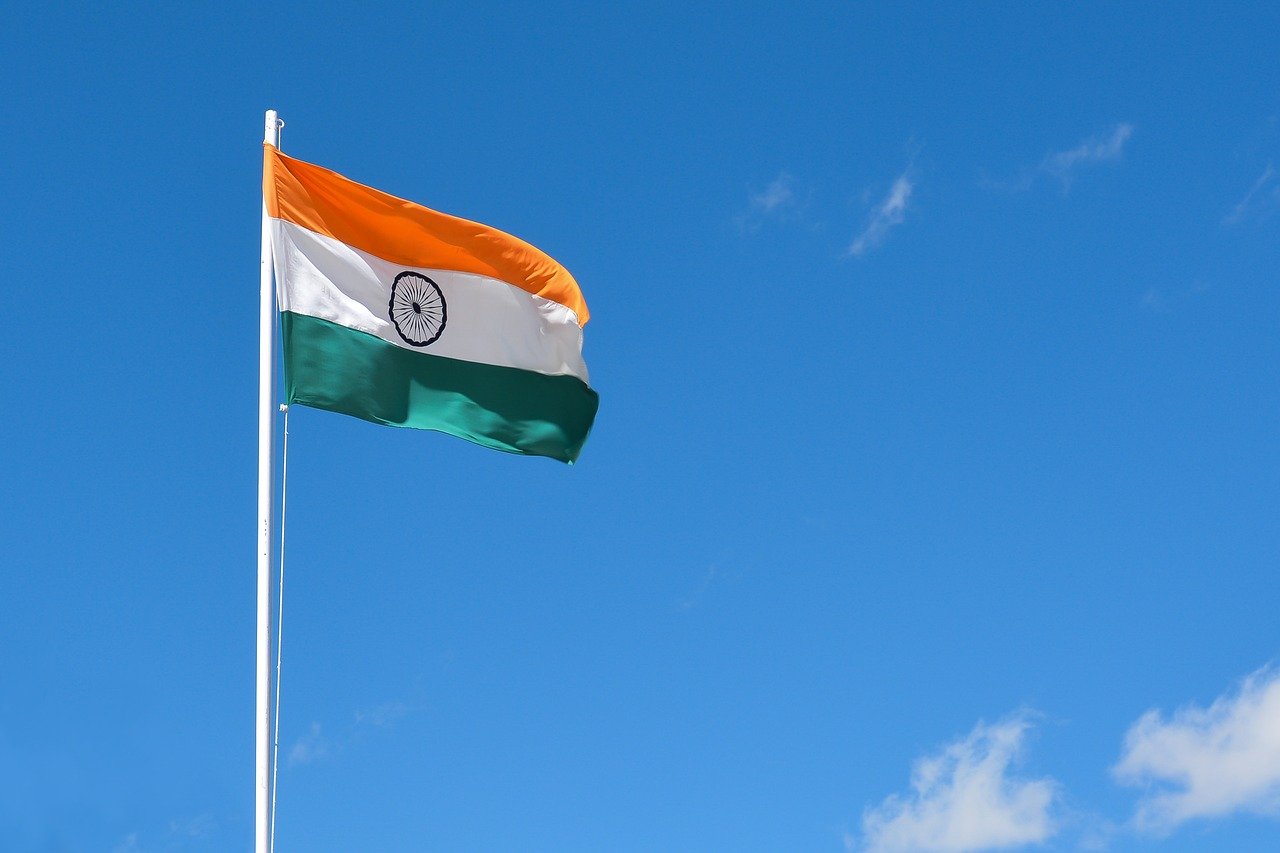We are always interested to know about the journey of celebrities, film stars, sports personalities, etc but how many of us are aware of the Journey of the Indian National Flag?
When someone says the National Flag of India, the first thing that comes to our mind is ‘the horizontal tricolors with saffron at the top, white in the middle, and dark green at the bottom. And a navy-blue wheel in the center of the white band in the middle.’
But there is more to it.
Before going into the evolution of the Indian Nation Flag. Let’s explore all the details and descriptions of the National Flag of India in today’s time.
National Flag of India
As per the official website,
The National Flag is a horizontal tricolor of India saffron (kesaria) at the top, white in the middle and India green at the bottom in equal proportion. The ratio of width of the flag to its length is two to three. In the center of the white band is a navy-blue wheel with 24 equally spaced spokes which represents the Ashoka Chakra.
The design of the National Flag was adopted by the Constituent Assembly of India on 22 July 1947.
knowindia.india.gov.in
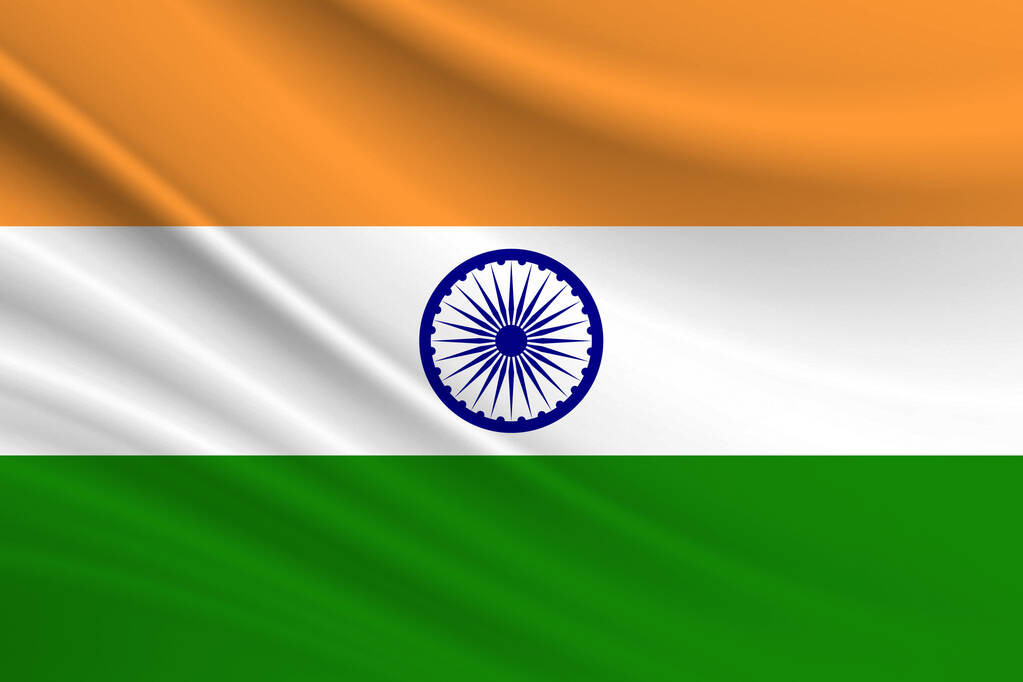
A detailed explanation of the Indian National Flag…
The National Flag is a horizontal tricolor of deep saffron (kesaria) at the top, white in the middle, and dark green at the bottom in equal proportion. The ratio of the width of the flag to its length is two to three. In the center of the white band is a navy-blue wheel that represents the chakra.
The top saffron color indicates the strength and courage of the country. The white middle band indicates peace and truth with Dharma Chakra. The green shows the fertility, growth, and auspiciousness of the land.
Its design is that of the wheel which appears on the abacus of the Sarnath Lion Capital of Ashoka. Its diameter approximates the width of the white band and it has 24 spokes. The design of the National Flag was adopted by the Constituent Assembly of India on 22 July 1947.
It is really amazing to see the various changes that our National Flag went through since its first inception. It was discovered or recognized during our national struggle for freedom. The evolution of the Indian National Flag sailed through many vicissitudes to arrive at what it is today.
History, Evolution and Journey of Indian National Flag
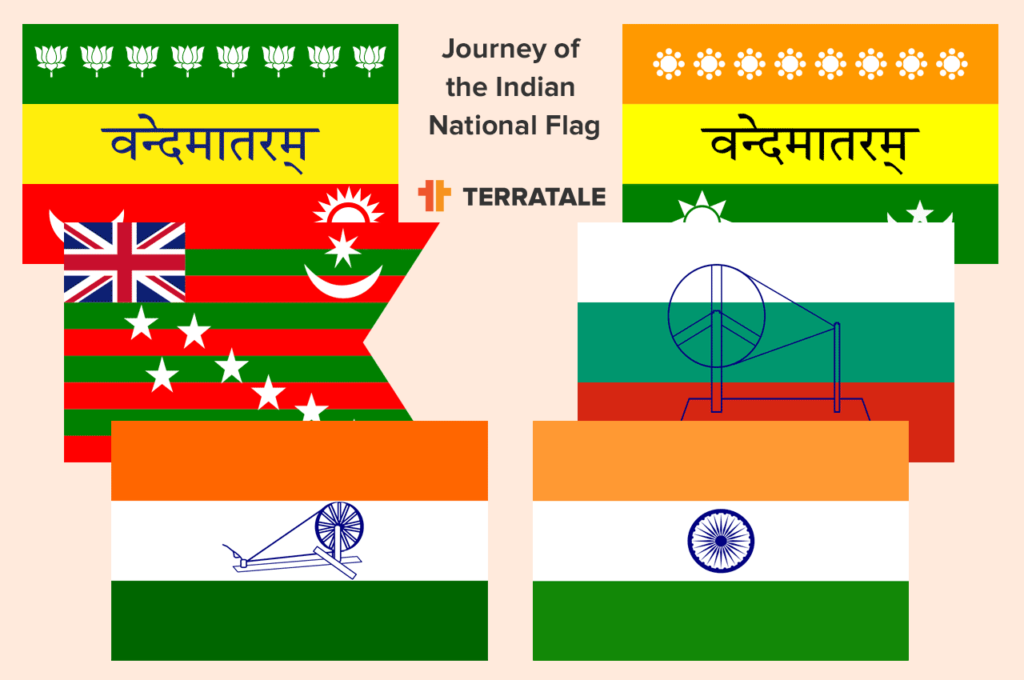
Indian National Flag is not just a flag made of cloth; it is a symbol of our nation’s struggle for Independence. In this post, we attempt to throw light on the journey of our nation’s most precious treasure.
It will be necessary for us Indians – Hindus, Muslims, Christians, Jews, Parsis and all others to whom India is their home – to recognize a common flag to live and die for.
Mahatma Gandhi
#1 Unofficial Flag of India in 1906 – Calcutta Flag
The journey began in the year 1906 when the first unofficial Indian National Flag was hoisted in the Parsee Bagan Square of Kolkata.
This flag which was composed of three horizontal stripes of red, yellow, and green was also known as the Calcutta flag.
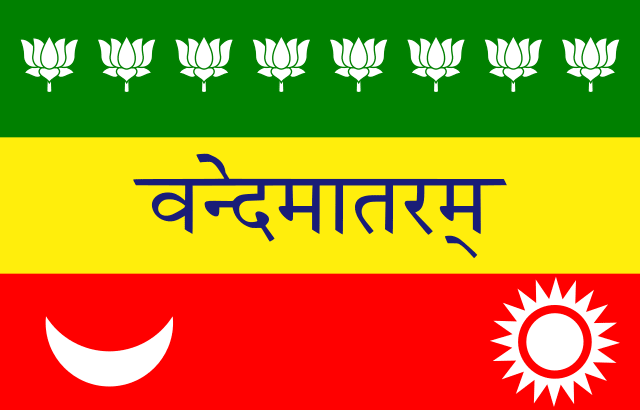
#2 The Berlin Committee Flag
The second flag was unfurled in the year 1907 in Paris by one of the most prominent Indian freedom fighters, Madame Cama along with her band of exiled revolutionaries.
This was also the first time an Indian Flag was being hoisted on foreign soil. Co-designed by Cama, Vinayak Damodar Savarkar, and Shyamji Krishna Varma, it was famously known as the Saptarishi flag.
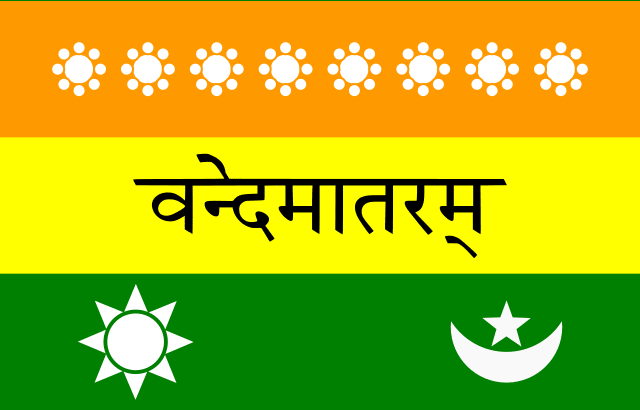
#3 The Flag Used During Home Rule Movement in the Year 1917
The third flag was hoisted by a British socialist, Dr. Annie Besant, and the “Father of the Indian unrest”, Lokmanya Tilak in the year 1917.
This flag was different from the previous two flags; it had five red and four green horizontal strips arranged alternately, with seven stars in the Saptarishi configuration super-imposed on them.
In the left-hand top corner was the Union Jack. There was also a white crescent and star in one corner. This flag, however, was not able to gain popularity among the masses.
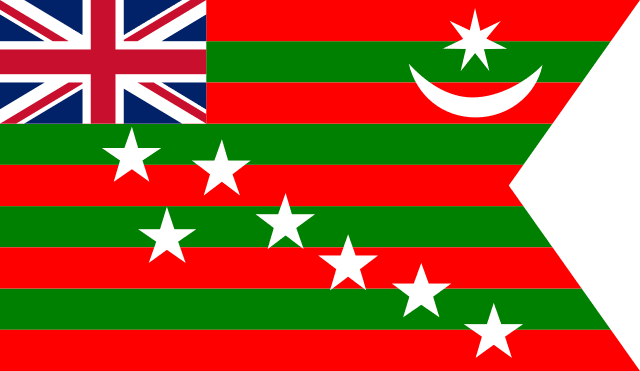
#4 The Flag Unofficially Adopted in the Year 1921
The fourth flag was designed in the year 1921 by Pingali Venkayya who was an Indian freedom fighter from the city of Vijayawada of Andhra Pradesh.
It was initially made of two colors- red and green which represented Hindus and Muslims.
However, on the suggestion of Mahatma Gandhi, a white stripe was added to represent the remaining communities of India along with a spinning wheel to signify the progress of the nation.
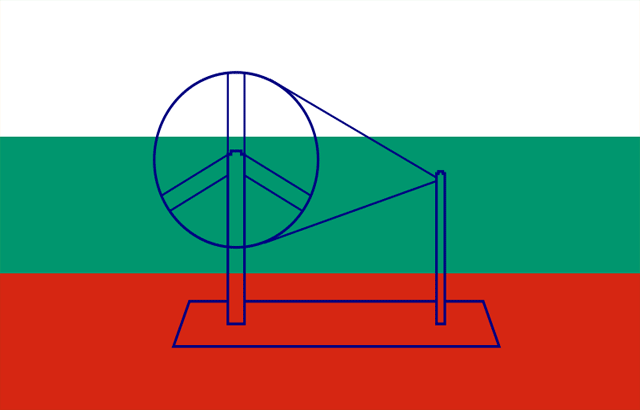
#5 The Flag Adopted in 1931
The fifth flag was adopted in the year 1931 as some people disagreed with the communal interpretation of the flag of 1921; therefore the red color was replaced with saffron which is a symbol of both Hindu yogis as well as Muslim darvesh.
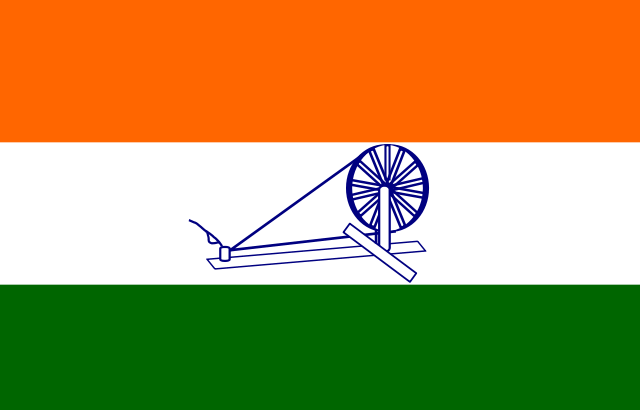
#6 The Present Tricolour Flag of India – The National Flag of India
And finally, the Tiranga was adopted on July 22, 1947, after India got independence.
Tiranga is a modification of the flag of 1931 where Charkha was replaced with Chakra and this is how our Indian National Flag completed its journey.
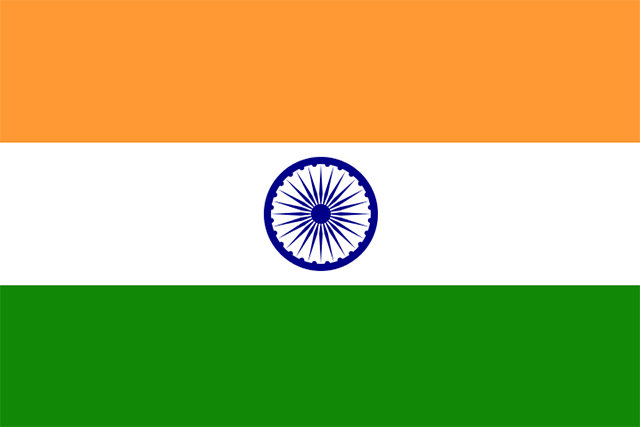
Colors and Meaning of the Indian National Flag
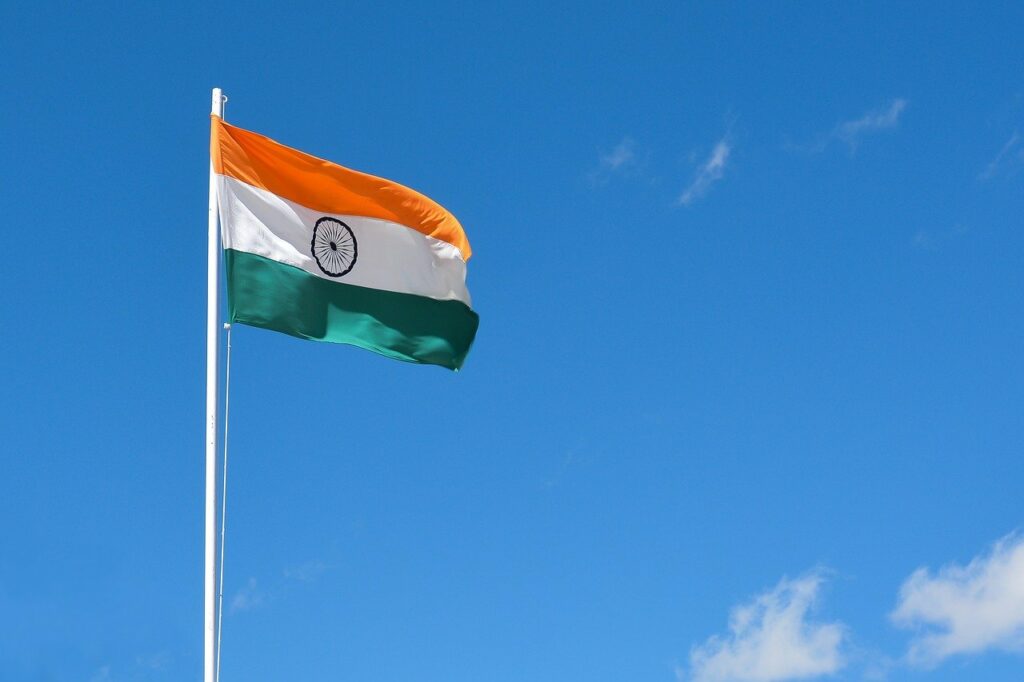
Pt. Jawaharlal Nehru proposed the flag at the Constituent Assembly on 22 July 1947.
It is a horizontal tricolor of deep saffron, white and dark green, with the Ashoka wheel in blue in the center of the white band.
Nehru presented two flags to the assembly. One was in khadi silk and the other in khadi cotton. The resolution was approved unanimously. Nehru’s choice of the flag as the national flag of India continues today.
It’s been the national flag of the Dominion of India from 15 August 1947 to 26 January 1950 and has served as the flag of the Republic of India since then.
The national flag of India is a tri-colored flag, with the national colors of saffron (yellow) in the top band, white (middle band), and green (lower band) at the bottom.
The Saffron in the top band represents the strength and courage of the country.
The White band symbolizes peace and truth with Dharma Chakra.
The green band at the bottom represents the fertility, growth, and auspiciousness of the land.
Dharmachakra in the middle represents the “wheel of the law”. The wheel of dharma, or the wheel of the law, represents life in movement and death in stagnation.
Here are HEX and RGB codes of the Indian National Flag color scheme,
- Colour scheme – Orange (Saffron) | White | Green | Navy Blue
- HEX – #FF9933 | #FFFFFF | #138808 | #000080
- RGB – 255-153-51 | 255-255-255 | 19-136-8 | 0-0-128
The Indian Flag Code: Do’s and Don’ts
Indian National Flag represents the hopes of countless Indians. It is the symbol of national pride. Insulting and disrespecting the national flag is an offense that is punishable under the Prevention of Insults to National Honour Act, 1971.
Originally the Indian National Flag code restriction didn’t permit civilians to fly the national flag except on national holidays such as Independence Day and Republic Day.
In 2002, the original Indian Flag Code was amended to allow individuals to hoist the flag on any day, subject to their liberty in protecting the dignity, honor, and respect of the flag.
Based on 26 January 2002 legislation (The Flag Code of India, 2002) there are some rules to fly the Indian National Flag:
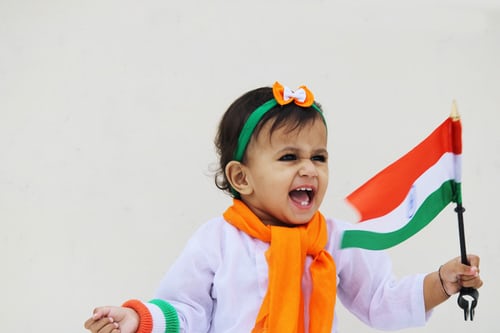
DOs:
- The National Flag of India should be rectangular in shape and should be made of hand-spun and hand-woven wool/cotton/silk. The ratio of the length and width of the flag should be 3:2.
- The saffron band should always be placed at the top.
- The Flag should be flown in public only between sunrise and sunset.
- Displaying a damaged flag is an act of disrespect.
- The National Flag may be flown in educational institutions on special occasions to inspire respect for the Flag. An oath of allegiance to the Flag has been included in the flag-hoisting ceremony.
DONTs:
- You can’t put any objects on top of the tricolor, including flowers, garlands, or symbols.
- The Flag should never be used for commercial purposes without the government’s permission.
- The Indian flag is forbidden to touch the ground, floor, or water. It cannot be draped over the hood, top, and sides or back of any vehicle, train, boat, or aircraft.
- Plastic flags should not be used because they are not biodegradable. Further, the disposal of plastic flags is a problem, with dignity.
- The national flag is only to be used as a flag for the country.
- It’s never to be used for decorations or as a festoon, rosette, or bunting. No other colors are allowed to be combined with it.
- The flag should never be flown at half-mast. In the event of the death of a dignitary such as the Prime Minister, this rule does not apply entirely.
A flag not only of freedom for ourselves, but a symbol of freedom to all people.
Jawaharlal Nehru
Times have come where people have started to define Independence Day as merely a day when people change their WhatsApp display picture to Indian Flag.
Flags can be found lying around street corners on the next day. That needs to change.
Our flag is a symbol of our freedom, unity, and abilities. Respect and only utmost respect is what it deserves.
Jai Hind!
FAQs – Indian Nationa Flag
Let’s take a look at some Frequently Asked Questions about the Indian flag and its history –
Who Designed the Indian National Flag?
Pingali Venkayya designed the National Flag of India. While the flag has undergone changes in the past decades, it was Pingali Venkayya who presented it to the All India Congress Committee in 1921. During that session, he suggested that the flag be made of two colors: Red and Green, representing the two main communities i.e. Hindus and Muslims.
What Is the Ratio of the Length and Width of the Indian National Flag?
The National Flag shall be rectangular in shape. The ratio of the length and width of the Indian National Flag should be 3:2.
Who suggested Ashoka Chakra in the Indian flag?
Mahatma Gandhi first spoke about the need for an Indian flag in 1921 in his journal, Young India. He proposed a flag with the spinning wheel (Charkha) at the center.
What is a Half-mast Flag?
When the flag is to be flown at half-mast, the position of the flag is about halfway up a mast or pole and then slowly lowered. The flag is flying from the middle of the pole, not the top. At the half-mast position, the flag signifies state mourning.
